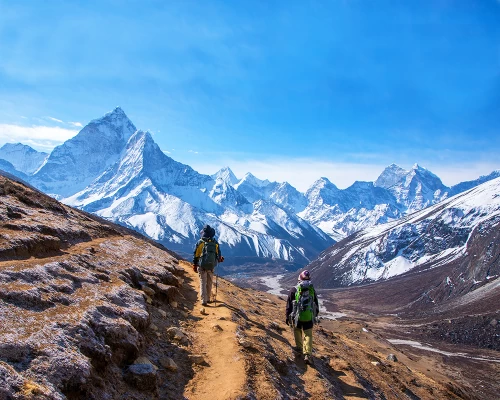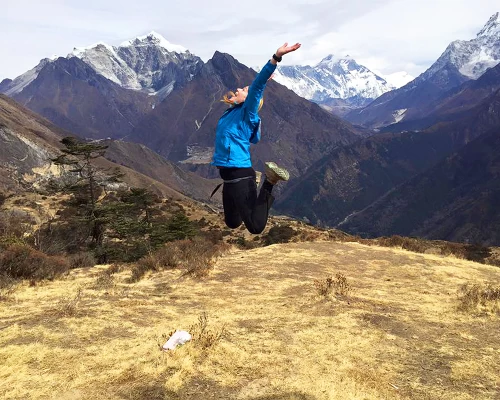The Everest Two Passes Trek is an exciting adventure that takes you through the popular Everest Base Camp Trek routes, and then on the way back treats you to thrilling routes of the two passes of the region. The Cho La Pass at an altitude of 5420 meters and the Renjo La Pass at an altitude of 5345 meters are the main attractions of this trek.
You will have the chance to see many different animals like Mountain Goats, Musk Deer, Pheasants, Lophophorus, Snow Ducks, Mountain Hawks, and even Snow Leopards if you're lucky! You will also enter the Sagarmatha National Park, which was established in the late 70s to conserve flora and fauna.
Once you trek towards Chola Pass after accomplishing the goal of Everest Base Camp, you will notice the difference between the two-pass trek and a normal trek to Everest Base Camp. The crowd of trekkers will be smaller, and you will enjoy the trek more. You will visit beautiful destinations like Gokyo, Dzongla, and Thame, and see a few monasteries on the trail.
The landscape of the passes is perfect, and the views from the top of both the passes and the grand view of the mountain range from the top of Gokyo Ri are no less than admiring the beauty of Gokyo Lake.
You will have the opportunity to see many giant mountains like Mt. Everest (8848m), the fourth-highest Lhotse (8516m), the fifth-highest Makalu (8485m), the sixth-highest Cho-Oyu (8210m), and other massive mountains. The number of mountains in between the wide range of towering mountains is unimaginable!
Also, Check Everest Base Camp Drive Trek In-Fly Out.
Reasons to Choose Himalayan Scenery Treks & Expedition for Two Passes
HST has completed over 1000 trekking expeditions around the nation. We have the best-experienced guides in the field. Along with that HST is going to help you in every step of your trip until and unless you happily complete your trip.
We have even been rated 5.0 stars on TripAdvisor which makes us your best choice as a trekking companion. We have several reasons to give you so that you won’t have to wander anywhere.
Also, Check 20 Reasons To Choose Himalayan Scenery Treks & Expedition.
Book the Two Passes Trek
Along with a feasible and affordable cost detailing you can choose Himalayan Scenery Treks & Expedition for conquering the Cho La and Renjo La passes. We will help you as your best travel friend so that you will always keep us at the top. Along with that with us as your trekking planner, no doubt that Mountains will always love you.
















